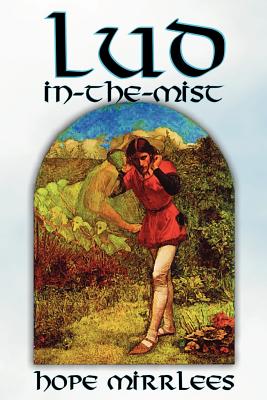
Given that literary fate, it is even more surprising to note that her literary connections were as auspicious as her work once was. As Mary Beard, the biographer of Mirrlees's close friend Jane Harrison, observed, Mirrlees presents "an uncomfortable challenge to the arbitrariness of literary fame" (139) because she has been "the subject of enthusiastic reviews in all the right places, of critical appreciations that proclaim her talent ('What Joyce has done for Dublin and Eliot for London, Hope Mirrlees has done for Paris'), she never quite makes it" (138). Mirrlees could not have been more prescient in her prayer, for, during her ninety-one years of life and even thereafter, her literary work has repeatedly fallen out of popularity, despite the critical accolades and sporadic revivals it has received. To pray that if it never gets recognition that I may accept it with resignation and that if it does, I may accept it with humility" (qtd. The book is dedicated to the memory of Mirrlees's father.A FEW YEARS after Hope Mirrlees's conversion to Roman Catholicism in 1929, the British writer recorded in one of her notebooks the following spiritual resolution: "To accept my talent gratefully and to offer it to God. Lud-in-the-Mist begins with a quotation by Jane Harrison, with whom Mirrlees lived in London and Paris, and whose influence is also found in Madeleine and The Counterplot. When the denial proves futile, their mayor, the respectable Nathaniel Chanticleer, finds himself involved reluctantly with the conflict and obliged to change his conventional personal life and disregard the traditions of Lud-in-the-Mist to find a reconciliation. In this novel, the prosaic and law-abiding inhabitants of Lud-in-the-Mist, a city located at the confluence of the rivers Dapple and Dawl, in the fictional state of Dorimare, must contend with the influx of fairy fruit and the effect of the fantastic inhabitants of the bordering land of Faerie, whose presence and very existence they had sought to banish from their rational lives. Lud-in-the-Mist's unconventional elements, responsible for its appeal to the fantasy readership, are understood better if they are analyzed in the context of her whole oeuvre. A more recent republication by the Cold Spring Press includes a foreword by Neil Gaiman and an introduction by Douglas A. It was reprinted subsequently by Orion Books in 2000 as part of their Fantasy Masterworks series.



In 1970 an American reprint was published without the author's permission, as part of the Ballantine Adult Fantasy series.

Whereas in the novels Madeleine and The Counterplot Mirrlees adapted elements from history, religions and literature, her use of a secondary-world setting in Lud-in-the-Mist associates it with the tradition of high fantasy, and thereby with its current popularity.


 0 kommentar(er)
0 kommentar(er)
